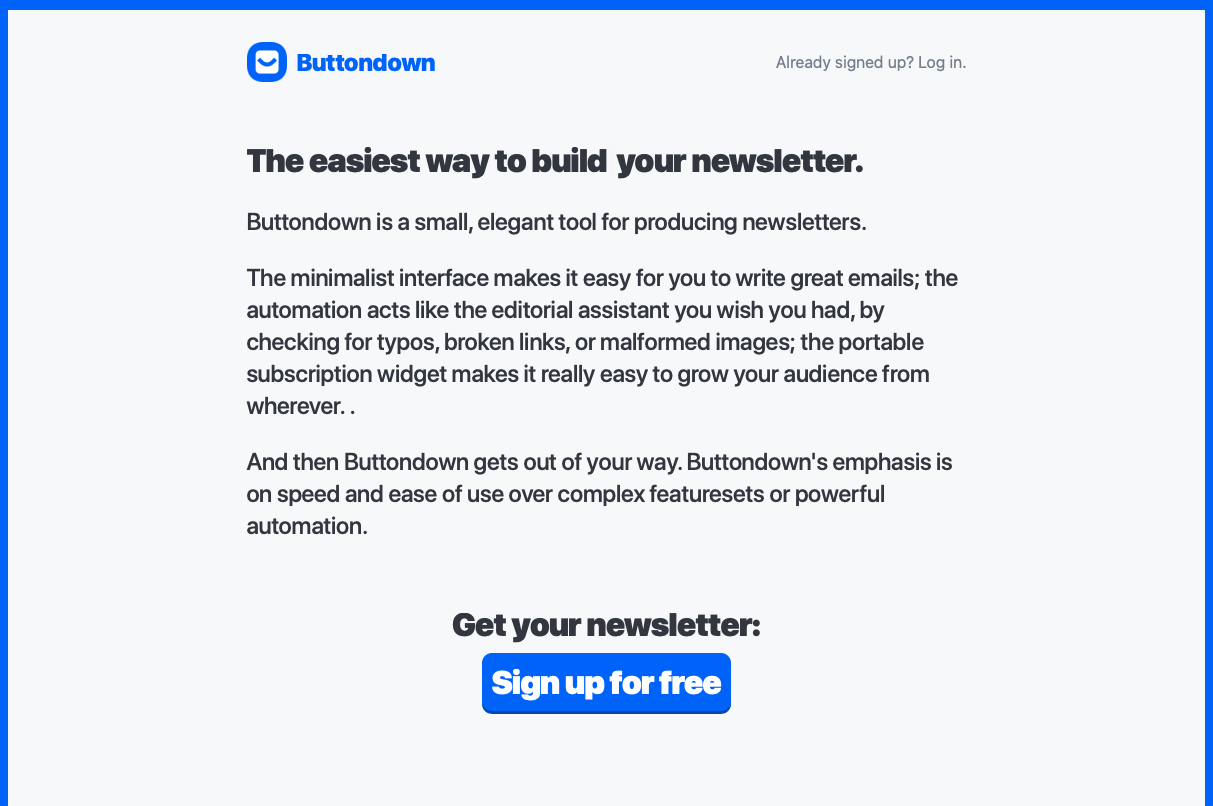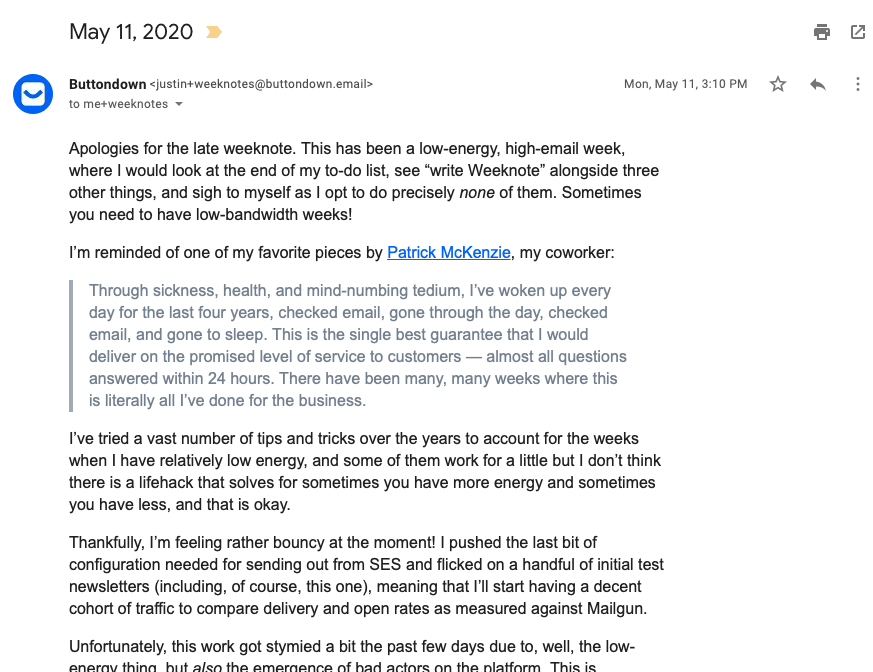How I Built A $5K/Month Newsletter Tool
Hi there! Who are you and what’s your background?
Howdy! I’m Justin Duke. I run two newsletters, both centered around my product (itself, fittingly, a newsletter tool) — Buttondown Monthly and Weeknotes from Buttondown.
When I’m not geeking out about newsletters, I … geek out about other things. (It’s a habit.). I’m a big poetry and weightlifting nerd, and it's summer right now in Seattle so I’ve been trying to spend as much time outside as I can. (In my day job, I work as a software engineer at Stripe, making it easier for folks to start and grow their online business.)
Prior to Stripe, I cut my teeth working at Amazon building out infrastructure for Kindle content.
What are your newsletters about?
As you might guess, both of my newsletters focus on Buttondown: the tool itself, the landscape, and my journey both as a developer and as a creator in the indie hackers niche. It started out as a fairly typical product development newsletter (“here’s what we launched this month”, “here’s what’s coming down the pipeline”) but I realized early on that folks were resonating way more with the trivial pieces: the bugs I ran into, the things I learned, and my personal stories rather than the “corporate” side of things.
When I launched paid newsletters, I knew I wanted to dogfood, and so I thought I’d pull out some of the most interesting bits for a paid weekly newsletter. The intended audience of my main newsletter was, first and foremost, folks who used Buttondown as a product — I thought it would be more fun to generalize the paid newsletter a bit, to appeal to folks who were more interested in following my journey less from the “newsletters” point of view and more from the “creator” point of view.
What is Buttondown? What motivated you to create the product?
Buttondown is a tool I’ve built for technical newsletters! Think “TinyLetter or Substack, except with Markdown and more APIs” — it’s a niche product for people like me, who are a bit more programmatically inclined but still want something quick and easy to manage emails and subscribers.
I was motivated to build Buttondown after I had been using TinyLetter for a while, and had perhaps the worst thought that any developer can have: “I bet I can build a better version of this in a weekend.” It took quite a bit longer than that to get the entire thing done, but I was able to use my own tool instead of TinyLetter at the end of two weeks; after I showed it off to a few friends they convinced me to make it something more than just a self-hosted tool.
I’ve been building Buttondown for over three years now, after mistakenly thinking it would be a quick one-and-done project. I got my first paying customer after around a month and it’s now just shy of $5,000/month.

What are some of the difficulties you’ve encountered in running your newsletters?
Motivation and timing is absolutely the hardest part for me. I’ve been fortunate the past few months to get into a very strict schedule and rhythm (every Saturday morning, without fail, I sit down and write), but I experience a bit of a slipping effect every now and then: I forget (or life gets in the way) one weekend, so I miss it, and then the following weekend I get so anxious that I miss that one too, and so on. The important part is consistency, both for yourself and for your readers.
Do you have a monetization strategy for your newsletters?
Having two newsletters means I get to segment a little bit! My main updates newsletter is free, but you have to pay $4/month for weeknotes. They’re both ad-free (they advertise Buttondown, but that hardly counts ;)). Weeknotes brings in a solid $900/month, which is not exactly a life-changing amount but is still wonderful and humbling (and pays for my two biggest vices, coffee and Green Chartreuse.)
What newsletters are you subscribed to?
Money Stuff is Bloomberg’s daily finance newsletter written by Matt Levine. It is, for my money, the perfect newsletter: witty, informative, and precise. Matt does an amazing job of breaking down things like credit default swaps or investor buyouts in a way that you’ll grasp them easily and understand the bigger picture.
Letters to Summer is an intimate, sweet look at a conversation between two friends. I’ve been turned onto this one from my friend Jasdev and it’s been great: I’ve discovered new games, new music, and (cliché as it is to say) a little bit of a new outlook on life.
What goals do you have for the future?
If you had told me two years ago Buttondown would become as large as it has, I would have laughed — it was a tool I made for myself first and foremost, and secondarily for my friends who also wanted an easier way to build newsletters. That’s equally true for the newsletters: the fact that a hundred or so folks are willing to pay me for the privilege of following me on my journey is super humbling!
Honestly, I hope for more of the same down the line. Buttondown — both as a newsletter and a tool — is something that I don’t think I’ll ever want to do full time, because it’s a privilege that it can be a place where I retreat from my day job.

Where can readers go to learn more about you and your newsletter?
Readers can visit the website, find Buttondown on Twitter, or sign up for Weeknotes from Buttondown at weeknotes.buttondown.email!

.png)

